SCIENTIFIC PROGRAMME
I3DA 2025 International Conference hosts 3 Plenary Lectures, Special Sessions, Oral Sessions and Poster Sessions and sound demos.
Soon more!
PLENARY LECTURES
We are delighted to announce that our keynote speakers this year will be: Jonathan Berger, Emma-Kate Matthews and Boaz Rafaely.
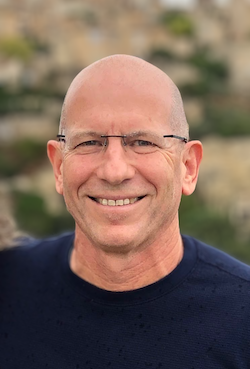
Boaz Rafaely is a Professor at Ben-Gurion University of the Negev in Israel, where he leads the Acoustics Laboratory, conducting research in spatial audio signal processing. He has published over 200 papers in journals and conferences, and is the author of the book Fundamentals of Spherical Array Processing. Prof. Rafaely has previously served as Head of the School of Electrical and Computer Engineering at BGU, Chair of the Israeli Acoustical Association, and Chair of the Technical Committee on Audio Signal Processing of the European Acoustical Association. He has also been an associate editor for IEEE Transactions on Audio, Speech and Language Processing, IEEE Signal Processing Letters, and Acta Acustica.
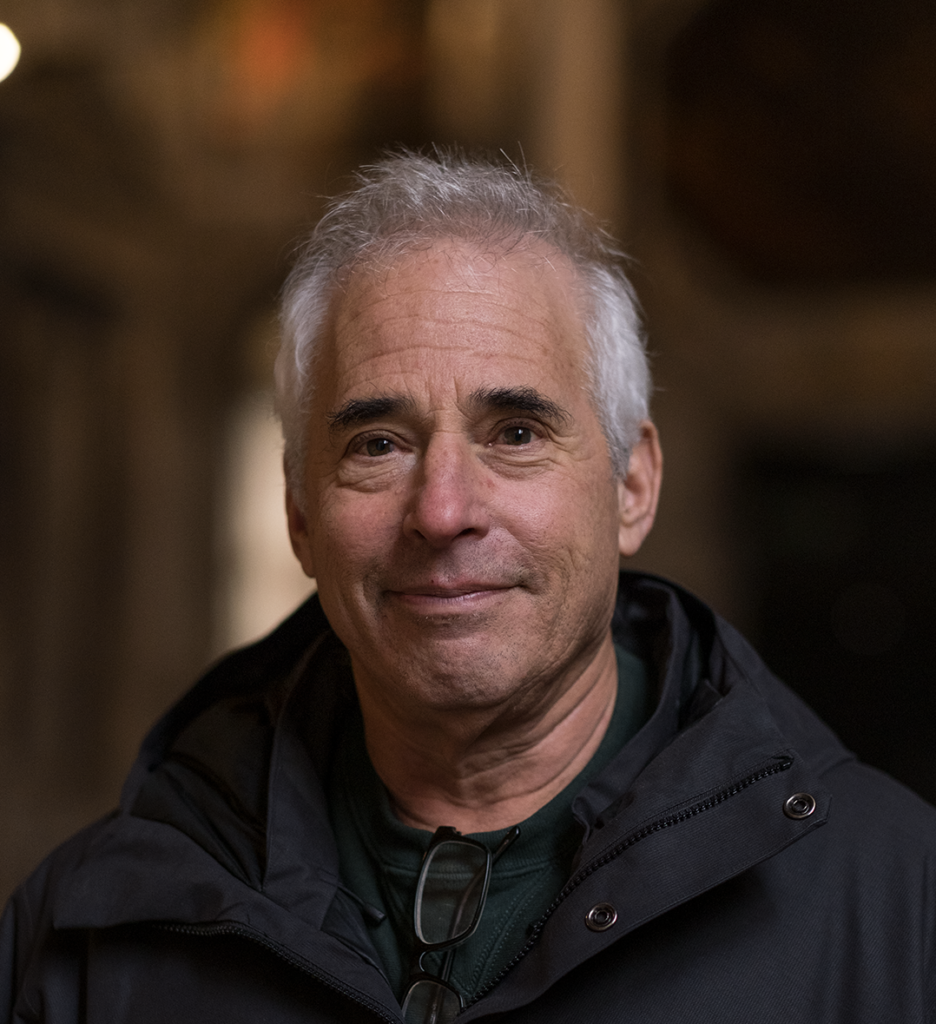 Jonathan Berger is the Denning Family Provostial Professor in Music at Stanford University. Berger is a composer of a wide range of genres including opera, orchestral, chamber, end electroacoustic music. He is also an active researcher, with expertise in computational music theory, music perception and cognition, psychoacoustics, and sonification. He has published over 70 academic articles in a wide variety of fields relating to music, science, and technology, including relevant work in digital audio processing in Neuron, Frontiers in Psychology, andthe Journal of the Audio Engineering Society. Among his awards and commissions are the Guggenheim Fellowship, the Rome Prize, fellowships from the National Endowment for the Arts, and commissions from Lincoln Center Chamber Music Society, the 92nd Street Y, The Spoleto Festival, the Kronos Quartet, and others. Berger is the Principal Investigator of a major grant from the Templeton Religion Trust’s Art Seeking Understanding initiative, to study the interplay of architectural acoustics and musical and ritual sound.
Jonathan Berger is the Denning Family Provostial Professor in Music at Stanford University. Berger is a composer of a wide range of genres including opera, orchestral, chamber, end electroacoustic music. He is also an active researcher, with expertise in computational music theory, music perception and cognition, psychoacoustics, and sonification. He has published over 70 academic articles in a wide variety of fields relating to music, science, and technology, including relevant work in digital audio processing in Neuron, Frontiers in Psychology, andthe Journal of the Audio Engineering Society. Among his awards and commissions are the Guggenheim Fellowship, the Rome Prize, fellowships from the National Endowment for the Arts, and commissions from Lincoln Center Chamber Music Society, the 92nd Street Y, The Spoleto Festival, the Kronos Quartet, and others. Berger is the Principal Investigator of a major grant from the Templeton Religion Trust’s Art Seeking Understanding initiative, to study the interplay of architectural acoustics and musical and ritual sound.
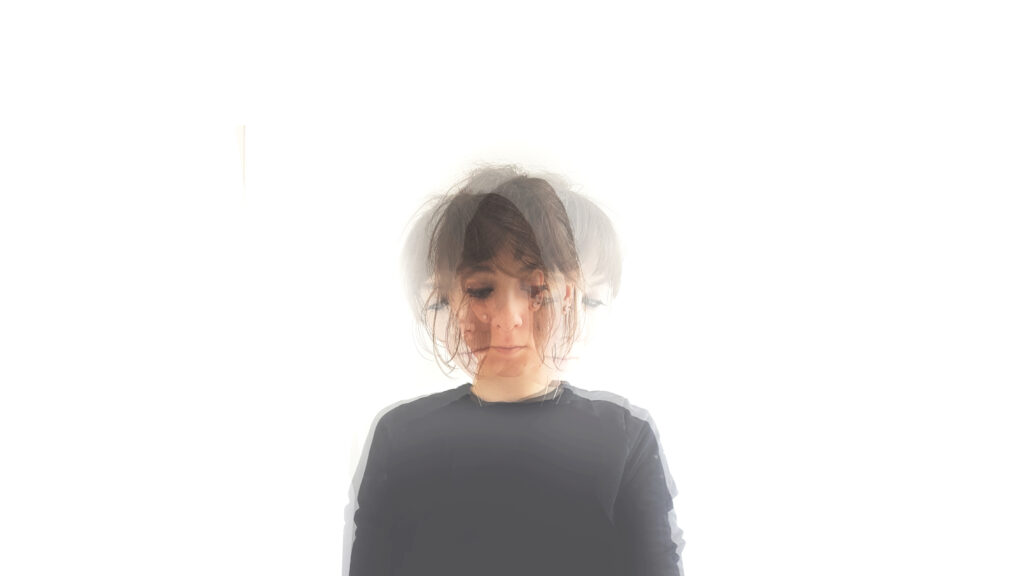 Emma-Kate Matthews is an architect, composer, musician, and digital artist whose work explores the creative intersections of sonic and spatial practices. She specialises in producing site-specific, spatialised audio-visual projects that investigate creative reciprocities between sonic and spatial practices. Her compositions have been performed at internationally renowned venues, including the Sagrada Familia, the Southbank Centre, the Barbican, and the Brighton Festival. Notably, she composed for the London Symphony Orchestra’s prestigious Panufnik residency. As a solo artist, Emma-Kate has released a series of electronic-classical works on acclaimed labels such as Algebra, NMC, Musicity Global, and Accidental. Her music has been broadcast internationally on prominent platforms like BBC Radio 3, Resonance FM, and Tokyo Radio.
Emma-Kate Matthews is an architect, composer, musician, and digital artist whose work explores the creative intersections of sonic and spatial practices. She specialises in producing site-specific, spatialised audio-visual projects that investigate creative reciprocities between sonic and spatial practices. Her compositions have been performed at internationally renowned venues, including the Sagrada Familia, the Southbank Centre, the Barbican, and the Brighton Festival. Notably, she composed for the London Symphony Orchestra’s prestigious Panufnik residency. As a solo artist, Emma-Kate has released a series of electronic-classical works on acclaimed labels such as Algebra, NMC, Musicity Global, and Accidental. Her music has been broadcast internationally on prominent platforms like BBC Radio 3, Resonance FM, and Tokyo Radio.
As a researcher and academic, Emma-Kate has contributed to influential publications, including Nature (HSSCOMMS) and Organised Sound (Cambridge University Press). She also served as lead editor for The Routledge Companion to the Sound of Space. In addition to her compositional work, Emma-Kate designs and creates her own instruments, known as Resonant Bodies. These innovative instruments explore dynamic relationships between sound and space, crafted using advanced digital modeling and manufacturing techniques. This project was nominated for both the Lumen Prize and the Aesthetica Art Prize in 2022 and was showcased at the Works+Words biennale in Copenhagen that same year. Website: https://www.ekm.works/
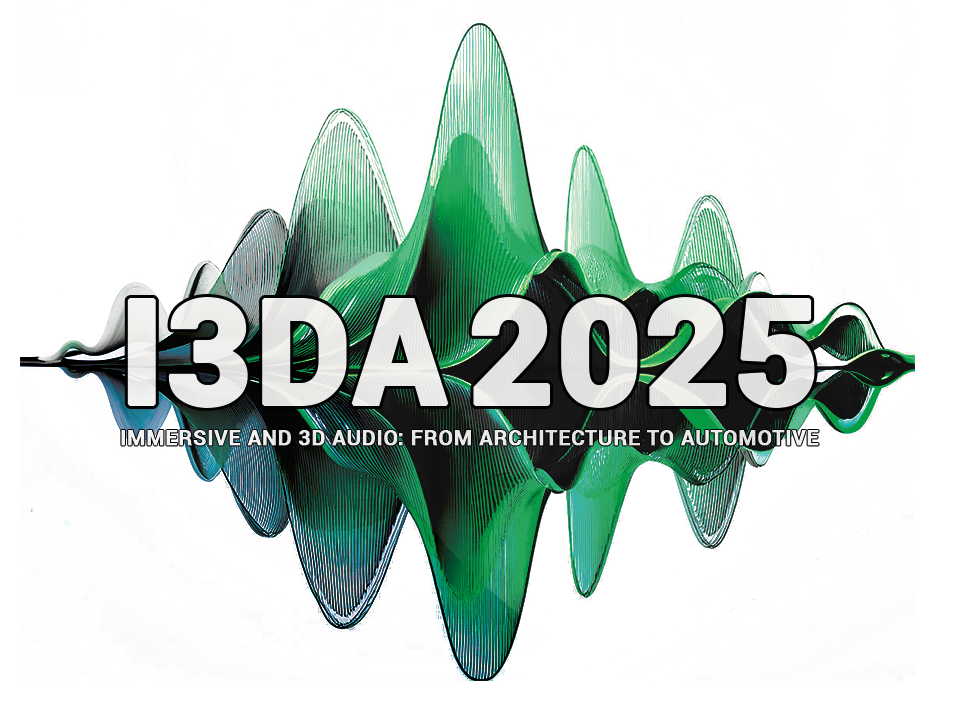

LIST OF SPECIAL SESSIONS (In progress…)
SPECIAL SESSION 1: “Resounding the Past: Immersive Technologies and the Heritage Acoustics of Performance Spaces ” – Chairpersons: Angela Bellia & Antonella Bevilacqua
This session aims to investigate how acoustic modelling and virtual reality (VR), combined with advanced 3D audio technologies such as binaural audio and ambisonics, are transforming our understanding of the relationship between space, performance, and audience.
By exploring immersive and virtual reconstructions of historical performance spaces, this session aims to:
This research has implications for a wide range of fields, including architectural acoustics, psychoacoustics, and immersive soundscape design. Moreover, it can shed light on the evolution of musical performance practices, the use of sonic space for body movement, and the use of spoken and sung voice in historical performance spaces (e.g. ancient theatres, odeia, amphitheatres, cathedrals, etc.).
This session welcomes contributions that:
This interdisciplinary approach, combining insights from heritage acoustics, sound studies, musical acoustics, vocal studies, and performance studies, will contribute to a more comprehensive and nuanced understanding of the history of music, theatre, dance, and opera.
Keywords: Historical Performance Spaces; Heritage Acoustics; Soundscape; Dancescape; Voicescape; Tangible and Intangible Heritage; Musical Acoustics; Architectural Acoustics; Aural Architecture.
Chairperson: Angela Bellia, National Research Council of Italy, Institute of Heritage Science
To see her work: https://nationalacademies.academia.edu/AngelaBellia
SPECIAL SESSION 2: “Applications of advanced audio reproduction in the areas of perception and cognition ” – Chairperson: Nicola Prodi, University of Ferrara, Italy
The blending of advanced multichannel spatialized audio reproduction with virtual reality has granted the possibility to develop virtual scenes that either closely mimic real conditions or fit desired scenarios in a totally virtual paradigm. In parallel with these technological developments also a search for a fruitful and epistemologically valid way of employing such resources has been undertaken. Research in the areas of perception and cognition has thus been boosted, for instance in the study of the basic mechanisms by which audition functions, or in the study of various cognitive processes, from core executive functions such as memory and attention to more high level processes such as speech comprehension and reasoning. In addition, reaction of humans to peculiar or even critical audiovisual conditions can be based on similar premises.
This session aims to host presentations that deal with the design, implementation and use of advanced simulation platforms with special potentials on spatialized audio which are focused on, but not limited to, the areas of perception and cognition. Case studies that involve tests with target populations of different kind are welcomed as well as more methodological contributions on characteristics, efficacy and limits of the systems conceived for the various types of applications. Moreover, theoretical contributions on the conceptual framework by which ecological validity and systems’ layout are assessed are also within the scopes of the session.
Keywords: spatial sound, perception, cognition, ecological validity
Session Chair:
Nicola Prodi graduated cum laude in physics at the University of Bologna and earned the PhD at the University of Ferrara where he is now Associate Professor at the Department of Engineering. He is also teaching at the University of Padova and at the Conservatory of Music in Ferrara. His main research interests include both the physical aspects of sound in enclosures, such as propagation and interaction with acoustical materials, and the perceptual ones, that is how sound is received, interpreted and what are its effects on listeners. In particular his current studies concern psychoacoustics and sound spatialization, intelligibility of speech and listening effort and the effects of noise on cognitive and physiological processes. He is also studying noise in the context of multimodal interaction with other indoor environmental quality stressors.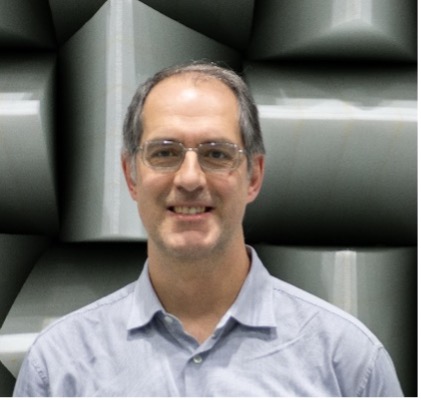
SPECIAL SESSION 3: “3D Audio: Nonlinear Acoustics and Automotive” - Chairpersons: Valeria Bruschi & Daniel Pinardi
This special session is focused on 3D audio systems in the automotive industry, with a focus on nonlinear acoustics.
The creation of an immersive sound experience in the car cabin aims to enhance sound reproduction, improve hand-free communication and produce targeted driver’s alerts. In addition, the car audio system could be affected by nonlinearities that must be taken into account for 3D measurements and simulations.
We are pleased to invite you to submit scientific contributions on the following topics but are not limited to:
Chairpersons:
He is a Research Assistant of Prof. Angelo Farina at University of Parma since 2016, mainly specialized in spatial audio, design of transducer arrays, acoustics simulations and 3D auralization, applied to automotive field, and underwater acoustics.
Valeria Bruschi received the M.Sc. degree (cum laude) in electronic engineering in 2018 at Università Politecnica delle Marche, Ancona, Italy, with a thesis on immersive sound reproduction in real environments. She obtained the PhD degree in 2023 at the Department of Information Engineering (DII) of the same university and she was a Postdoc researcher at the same department from February 2023 to March 2024. She has been a research Assistant Professor at DII since April 2024. Her current research interests are mainly focused on digital audio signal processing (DSP), with particular attention to adaptive DSP algorithms for linear/nonlinear systems identification, audio equalization, and immersive audio systems. She is a member of the Audio Engineering Society (AES) and member of the Institute of Electrical and Electronics Engineers (IEEE).
SPECIAL SESSION 4: “The Acoustics of Instruments” – Chairperson: Edoardo Piana
The session will delve into the fascinating world of how sound is produced, manipulated, and perceived when using various musical instruments. Manuscripts exploring the intricate physics behind the vibrations, resonances, and harmonics that give each instrument its unique voice are welcome. This session promises to deepen the understanding and appreciation of the science that underpins the art of music.
Chairperson:
Edoardo Piana holds the position of associate professor and founder/head of the Applied Acoustics Laboratory (ISO 9001 certified) at the University of Brescia. His main research fields are: acoustic insulation of composite materials, acoustic absorption of innovative materials, acoustic metamaterials, environmental acoustics, noise from high voltage power lines and electrical substations and sound propagation in ducts.
He authored numerous articles in international and national scientific journals and participates actively to the main congresses in the sector. He is the scientific referent for the University of Brescia in the cooperation agreements for the development of projects in the field of vibroacoustic with the Royal Institute of Technology (KTH) in Stockholm and the Katholieke Universiteit in Louvain.
Member of ISO/TC 43/SC 2/WG 32, “Determination of acoustical parameters of materials” and of the UNI technical commission “Acoustic and vibrations”, collaborates with various companies on projects with high scientific content.
At his own university, he holds Applied Acoustics and Technical Physics courses. He has also supervised numerous degree and doctoral theses.
SPECIAL SESSION 5: “Advancements in 3D Acoustic Measurements and Simulations for Auditoria and Concert Halls” - Chairperson: Ruoran Yan
This session explores the latest advancements in the measurement, recording, and modeling of auditorium and theater acoustics. We welcome contributions showcasing innovative methodologies, emerging technologies, and case studies that enhance our understanding of spatial sound characteristics in both historical and modern performance spaces.
Keywords: 3D acoustic measurements, historical theaters, modern auditoria, acoustic simulations, computational modeling, immersive audio, data-driven analysis.
Chairperson: Ruoran Yan
SPECIAL SESSION 6: “The Acoustics of Sacred Spaces” – Chairperson: Gino Iannace
This session concerns the study of the acoustics of sacred spaces such as churches, mosques, places of worship generally located outdoors and in confined spaces (even caves). The purpose of the session is to discuss the effects of acoustics in these environments and how the acoustics influence perception and participation in religious services. Experiences relating to the acoustic correction of these environments can also be presented.
SPECIAL SESSION 7: “Spatialisation, Binaural Reproduction and Personalisation of Audio in Virtual, Augmented Reality” – Chairperson: Athanasios G. Malamos
Recent technological developments are having a fundamental impact on the field Human-Computer Interaction. Technologies such as holography, head-mounted displays, full-dome immersive video projection, kinesthetic communication (haptic technology), transparent monitors, and three-dimensional (3D) sound and electronic sensors, facilitate sophisticated and interactive environments using augmented and virtual reality. The scope of this augmentation is participant immersion, which is the ultimate goal of an effective virtual or augmented experience. It is a common belief that aurality constitutes an essential part in VR and AR and offers additional details and a visceral sense to the immersive experience. Aurality encloses the synthesis, spatialisation, and reception of sound in a virtual world.
In this session, we welcome research papers that lie in all the individual aspects of aurality and sound spatialisation as well as novel engineering efforts and applications that bridge VR and AR development with immersive sound and auralisation.
Chairperson:
SPECIAL SESSION 8: Acoustic Simulations and Auralization
SPECIAL SESSION 9: “Creative Use Cases of Immersive environments in humanities research” – Chairpersons: Jonathan Berger & Cobi van Tonder
Abstract:
Recent audio technologies facilitate simulation of the acoustical signatures of historic structures. Together with immersive visual technologies it is possible to provide new perspectives and deeper insights into the role of architecture on human behavior. This panel will discuss the implications of using immersive technologies to reanimate cultural heritage sites with particular emphasis on archaeology, musicology, anthropology, and sound studies.
We invite a wide scope of papers about practice based projects – with matching demos where possible.
Keywords:
Data acquisition, analysis, modeling, architectural acoustics, cultural histories, resonant properties, performance spaces, performance practice, spatial audio, virtual reality, cultural studies, musicology, history of art and architecture, cognitive science, audio engineering, archaeology, anthropology, musicology, music, rituals, sound and space, cognition, perception, psychology, composition, sound art, art practice, immersive arts.
Session co-chairs: Jonathan Berger, Stanford University and Cobi van Tonder, University of Bologna
SPECIAL SESSION 10: “AI and Machine Learning in Acoustics and 3D Audio” – Chairpersons:
For this session we invite papers and posters about AI used in Acoustics and 3D Immersive Audio applications.
Keywords:
Data acquisition, analysis, modeling, architectural acoustics, cultural histories, resonant properties, performance spaces, performance practice, spatial audio, virtual reality, cultural studies, musicology, history of art and architecture, cognitive science, audio engineering, archaeology, anthropology, musicology, music, rituals, sound and space, cognition, perception, psychology, composition, sound art, art practice, immersive arts.
Session co-chairs: